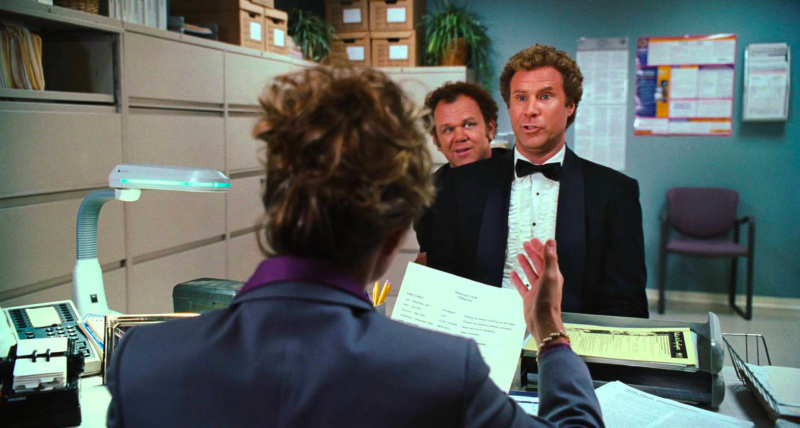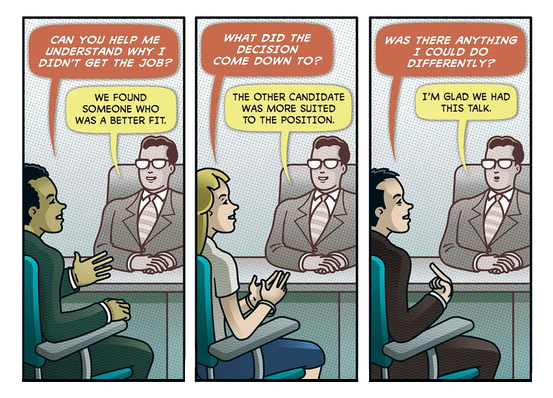By Garreth Dottin
We’ve all been there. Hunched over a desk. Scrolling through job boards. Looking for some trace of hope that you’ll ever work again.
At some point you enlist help. And that’s how you end up across the table from a recruiter.
By virtue of their relationships with employers, recruiters hold a lot of power over your job search. They can decide whether you end up at a rising startup or a fading conglomerate.
Whether they’ll flip you to the first company that comes along — or take time to groom you for a better one — often down to one thing: personal narrative.
I sat down with a recruiter to learn more about how they view recent grads, and what grads can do to get an edge in the job market.
Matt’s a recruiter at a sizable design startup in New York. He couldn’t resist kicking off the conversation with a “How’s the job going? Are you happy in your current position?”
We quickly moved on to what he said is the most overlooked part of the job hunt: shaping your personal narrative.
First Impressions and Narratives
Contrary to what most people assume, an interview — and your narrative — really starts the moment you walk into the office. Everything shapes the first impression you make with your interviewers — from whether you’re early to how you talk to the receptionist.
Psychologist Nicholas Rule described the science of first impressions as a situation that happens almost instantly.
“This happens so quickly — just a small fraction of a second — that what we see can sometimes dominate what we know.” — Nicholas Rule
Once you’re in the office, the time to plan out your talking points has passed. By the time you walk into the office, your focus should be on the people in the room instead of the anxiety in your head.
One tip that’s always helped me is to visualize the interview before I go to the company’s office. Think over the papers you’ll have in your hand, the clothes you’ll be wearing, how you want to introduce yourself.
If you practice this simple visualization trick before you walk into the office, you’ll better-anticipate their questions and be better-prepared to react.
Will it blend?

People often assume that a personal story means how you stand out or what makes you different. That’s certainly part of it.
But an often overlooked part of a your story is how you fit into the hiring manager’s narrative for their team, and where the company’s going.
This is where blending comes into the picture.
Before we dive into what blending means from a psychological standpoint, let’s look at it from the physical. Blending really starts with how you look.
Matt the Recruiter says he’s immediately put off when an applicant goes to a developer interview at a tech company dressed in a suit.

He says such an outfit instantly creates an awkward air for the rest of the interview, because such a professional getup lacks the intimacy factor he’s looking for in a potential team member.
Unless a suit is the common attire for the rest of the staff, I would opt against wearing your nicest tie to that next interview.
Blending in Culturally
How you look is far from the only aspect of blending, though. Matt the Recruiter talks about the need to fit in from a psychological standpoint as well. He says you need to create a mental image.
Within the time allotted for the interview, you have to convince the recruiter that you’re the ideal candidate for them to work alongside them 40 hours a week for the next several years.
Let’s dive more into what that means.
“Your brand is a story, it’s a story that helps people tell themselves about you. Most of the stories are unfair, prejudice, lack of information and fear… They are never true, nobody knows you as well as you do.” — Seth Godin
It’s up to you to shape that story. Seem like someone your interviewer would hang out with. Whatever it is they’re looking for, the story you present should blend into the atmosphere and be vaguely familiar.
For example, I’ve found appealing to an interviewer’s sense of nostalgia works well to quickly build a bond.
I can recall numerous times this technique helped me during various job searches — most critically while hunting for my first job out of college.
As a recent college grad, I lacked much in the way of work experience. But I still wanted a prestigious job. So I applied for the World Bank.
I told myself that if things didn’t go well with this “stretch” position, I could always take the assembly line approach and send out hundreds of emails to less desirable positions and pray for the best.
Before arriving at the World Bank for the interview, I did my homework. I knew that most of the staff was international, with experience on overseas projects, and that it was a largely European crowd.
Everything I’d heard from people who knew the place was that there was this cavalier adventurous spirit to the people who worked in the World Bank, akin to the Peace Corps or the Foreign Service.

I knew that in order to stand out, even as an engineer, I needed to mold my story closely to theirs.
Unfortunately, I hadn’t taught English in Chile, built houses in Uganda, or made myself useful on any other adventures. But I had lived overseas in England as a kid, and had the chance to travel. So I made sure throughout my interview to sprinkle that in and to speak on my plans to travel in the future.
I’m convinced to this day that’s what separated me from the many other engineers who applied for the same project.
Less is more
By this point, you’ve done the visualization technique where you envision yourself in the interview. You’ve done the research to understand the culture and mood of the office. You’re a qualified candidate, so you know how to dress. You’re probably pretty qualified to tell your story, too.
If you stopped here, you’d be ahead of most candidates. But if you want to really have mastery over your narrative, you must remember: less is more.
A study recently done by Michael Norton at Harvard School of Business drove this point home to me.
Before they started the study — which involved rating other people — participants were asked whether having more information about a person would make them more open to liking someone new.
Unsurprisingly, 88% of people suggested that the more information they had prior, the more likely they would like someone new.
But the data showed something very different. The more the participants knew of these perspective people, the lower they rated them.
The researchers tried this same study over and over again, even conducting a similar one where the participants were allowed to write down traits about themselves. They took this pool of traits — which were overwhelmingly positive — and divided them up into groups describing hypothetical people.
Even in this circumstance where the traits used to describe people were almost all positive ones, people who had a shorter list were generally better liked.
What the results of this study seem to imply is that when you leave something up to people’s imagination — and leave more mystery in your story — you’re more likely to leave a positive impression.
So figure out how to tell your story in as few talking points as necessary. By leaving more to your interviewer’s imagination, you’ll find that employers are more likely to feel the need to call you back.
Much of the advice surrounding the process of getting a job is in the form of a series of disparate tips about formatting your cover letter, making the right amount of eye contact, and other pieces of advice that seem to wax and wane with the times.
But preparing a strong personal narrative is the closest thing that Matt the Recruiter has found to timeless career advice. And it’s certainly worked for me.
If you liked this article, click the heart below to recommend it so more people will see it here on Medium. And check out Habits and Design my online publication interested in the intersection of data and culture.
